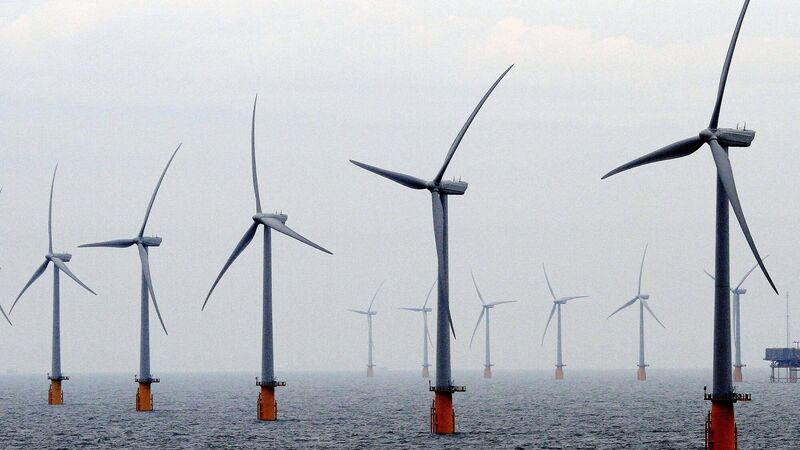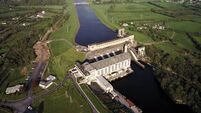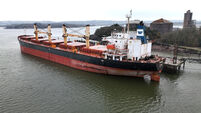Mick Clifford: State playing into the wind on climate change

The understands the ESB were informed of the decision by Equinor to exit three weeks ago. Why keep everybody in the dark if it didn’t matter?
The rubber officially hit the road yesterday. Now that the climate action plan has been launched, it’s time to get cracking with the action bit.
Some of this will be painful at different levels of society, but one area that should be straightforward is the generation of electricity through off-shore wind energy. Except it isn’t.
On the morning that the action plan was launched the broke the story that one of the world’s biggest off-shore wind developers is leaving this country.
Equinor, which entered a joint venture partnership with the ESB amid much fanfare in 2019, has had enough. Officially the Norwegian company’s reason for leaving is simply a reassessment of its priorities.
The understands that it is more accurate to attribute Equinor’s exit to frustration with the Irish regulatory and planning systems. When this was put to the ESB, the response was “they decided to stop their offshore wind activities in Ireland, in part due to local regulatory uncertainty.”
When a spokesperson for Equinor was asked whether the Irish regulatory system contributed to the decision to leave, he responded: “The decision is based on many things and obviously the regulatory process would be part of that but it is just a part of the totality.”
Make what you will of that. The ESB certainly would not want to get on the wrong side of the government apparatus as it expands its interests in renewables. And there is no percentage for the Norwegians in criticising a foreign government, particularly once it is leaving that state.
Sources in the offshore energy industry are adamant that behind closed doors the consensus is that Equinor had had enough of faffing about with a slow and cumbersome regulatory system and a protracted planning process.
Reacting to the departure of Equinor, government ministers such as Michael McGrath and Darragh O’Brien suggested it was no big deal, there are plenty more fish in the sea. It “will not inhibit delivery of offshore wind energy,” Mr O’Brien said.
One might hope rather than expect that the minister’s forecast is correct. Equinor is one of the biggest players in the market and its exit will have been duly noted by various international competitors.
In any event, if it’s no big deal why didn’t the ESB or the Minister for the Environment announce the departure and wish the Norwegians well. The understands the ESB were informed of the decision three weeks ago. Why keep everybody in the dark if it didn’t matter?
The blow rendered by Equinor’s departure is best illustrated by the biggest project it was involved in through the joint partnership.
Read More
Just last April the partners announced that it would build a €2bn offshore floating wind farm development near Moneypoint in Co. Clare that would produce 1.4GW (gigawatts) of electricity to power 1.5 million homes.
The total amount of electricity earmarked for offshore wind by 2030 is 5GW. The Moneypoint farm represented over a quarter of that target and it was only one of a number of farms which the ESB hoped to build with Equinor.
The importance of offshore wind in contributing to emissions targets cannot be overstated. Last August, for instance, Leo Varadkar was adamant that offshore wind would be central to addressing both the state’s electricity supply issues and the conversion to renewables. “The solution is a huge expansion of renewable energy production, especially off-shore wind,” he said.
Until recent years, the generation of wind energy was largely focused on the onshore market. This has been a minefield as many developments faced protests and delays, often with good reason, from local communities.
For the last 10 years, successive governments have failed to implement set-back distance and noise guidelines for the industry because of fears of a major political cost. An exercise that might take six months in other European countries has not been completed here for over a decade.
The political fears combined with the realisation that onshore is a relatively finite market at this stage, has prompted the move offshore. Now, however, while developers are lining up, it would appear that the state apparatus is not up to speed.
Developers in every sector will lobby and cajole in order to receive the most favourable route to the bottom line, but there is mounting evidence that their complaints in relation to offshore wind are well-founded. The biggest issue is simply one of resources deployed to process applications for foreshore licences.
This was referenced last September by Wind Energy Ireland’s CEO Noel Cunniffe at the umbrella group’s annual conference. “Resources need to be invested in critical government departments and state agencies like An Bord Pleanala, National Parks & Wildlife Service (NPWS), EirGrid, ESB Networks and the CRU to enable them to help deliver the target (for renewables) set in the Programme for Government,” he said.
This view was echoed by one developer in the business who attributes some of the shortfall in resources to a reluctance to commit resources until a new licencing regime is in place. The new regime will come into force once the Maritime Area Planning Bill completes its journey through the Oireachtas and comes into force. (it is currently at committee stage).
However, this developer points out that it could take another year to get the new regulatory authority up and running and, in the meantime, the backlog of applications will build up. The foreshore section in the Department of Housing — an unusual location for the job — is operated by a handful of engineers.
The NPWS is understood to be equally understaffed or at least not operating in a manner designed to respond promptly to inquiries and applications. And then there is the fear of legal challenges, which haven’t gone away just because the work has transferred offshore, many miles from anybody’s domestic abode.
One of the big issues here is the EU habitat Directive under which applications are being constantly challenged in the courts. Frequently the challenges are successful which suggests that not enough care is being taken in the design and location of developments.
All of this will most likely change in the coming years as the use and centrality of wind energy is realised. Time, however, is not on our side. It’s a short eight-and-a-half years to 2030.
If one of the ostensibly more straightforward and uncontentious elements of the new greening cannot be executed expediently and with minimum fuss, what chance is there for the rest of the climate action plan?
CLIMATE & SUSTAINABILITY HUB

















